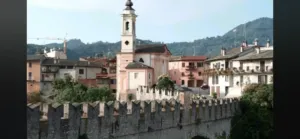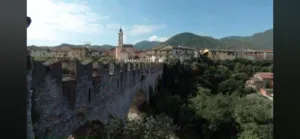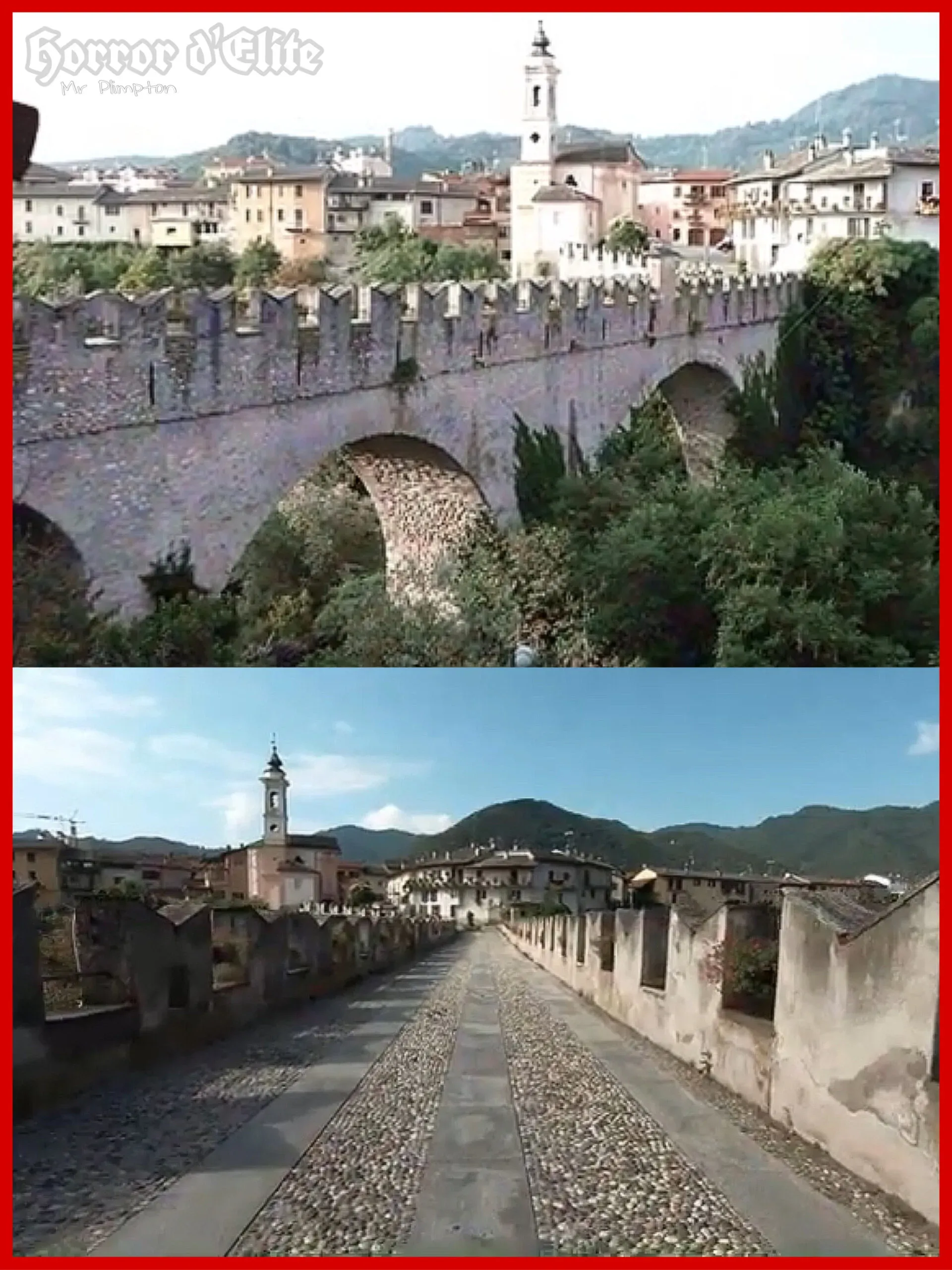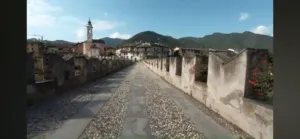The Devil’s Bridge
 The Devil’s Bridge.
The Devil’s Bridge.
The Devil’s Bridge of Dronero is an ancient medieval bridge located in the Piedmont region, in the province of Cuneo. It is famous for its suggestive architecture and the legend surrounding it.
It stands approximately 18 meters tall and has large uneven arches.
The main arch has a diameter of 27 meters and a length of 6 meters.
It was built in 1428 by a certain master Antonius to facilitate access to Dronero and the Maira Valley for those coming from Cuneo.
 The legend.
The legend.
It is said that the inhabitants of Dronero sought for a long time to build a bridge that would allow them to cross the Maira stream without difficulty.
Unfortunately, every attempt proved to be a failure. No construction seemed to be sturdy enough against the floods of the impetuous stream. For every bridge that was built, a heavy rain was enough to collapse all the fragile work of men.
 It all seemed futile, so much so that, at a certain point, the mayor of the town decided to ask the Devil for help in the hope that he could build a strong enough bridge.
It all seemed futile, so much so that, at a certain point, the mayor of the town decided to ask the Devil for help in the hope that he could build a strong enough bridge.
The Devil accepted and made a pact with the mayor: it was decided that the first soul to cross the bridge once it was finished would be his.
And so it was that Dronero finally had a bridge sturdy enough to withstand even the worst storms and the devastating waters of the stream.
The question remained of the soul to be given to the Devil to honor the pact.

The mayor then had an idea to solve the issue: he took a piece of bread and threw it onto the bridge. Immediately after, a stray dog passing nearby rushed to take it, effectively becoming the first soul to cross the new bridge.
The Devil, tricked by the mayor’s move, fled away in anger. From that day on, the bridge was named the Devil’s Bridge.
The Devil’s Bridge of Dronero is now a historical and touristic icon.


 The legend.
The legend.




